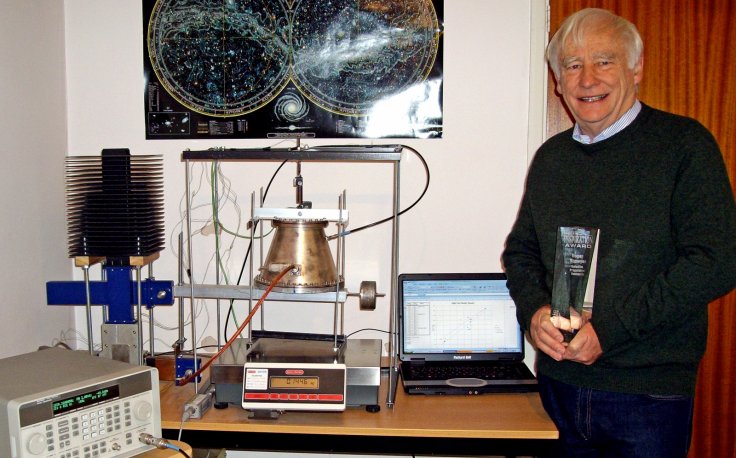Power without fuel
Roger Shawyer, a British scientist thought up and developed a technology called EmDrive. It’s based on the theory of special relativity that it’s possible to convert electrical energy into thrust without the need to expel any form of repellent.

“This technology is a quantum leap – it would enable vertical take-off and landing for airplanes, it’s quiet and it uses liquid hydrogen as a fuel, so it’s green too”, said Roger Shawyer. “The big aerospace companies have designed their last big jets, that’s one of the implications.”
Launching satellites into space would be much cheaper and EmDrive could be key to solving the energy crisis, if solar power could be harnessed off the satellites and sent back to Earth. But the big thing is that it potentially could facilitate practical space travel in and around the solar system. If the EmDrive would work, it could take a spacecraft to the moon in a matter of hours and a trip to Mars in 70 days.
They said it couldn’t be done…
How does it work? Electromagnetic microwaves are bounced around a conical cavity in such a way that electrical energy is converted directly into thrust (well, it’s a little more complicated than that). Then there are the laws of physics to take into consideration: In order for a thruster to be propelled forwards, something must be pushed out of the back of it in the opposite direction – according to the law of conservation of momentum. And physics says particles in the quantum vacuum cannot be ionised, so therefore you cannot push against it.

An EmDrive device is in the hands of NASA Eagleworks, where engineer Paul March is performing further tests after initial tests by Sonny White. The researchers claim to having successfully tested their EmDrive in a hard vacuum.
On April 29th, the researchers confirmed – although it didn’t seem possible – that the technology actually works: electricity converts into microwaves within the cavity that push against the inside of the device, causing the thruster to accelerate in the opposite direction.
“Thrust measurements of the EmDrive defy classical physics’ expectations”, said the researchers, who have been testing the highly controversial electromagnetic space propulsion technology.
They posted on the Nasa Spaceflight forum that when lasers were fired into the EmDrive’s resonance chamber, some of the laser beams had travelled faster than the speed of light, which would mean the EmDrive could have produced a warp bubble.
… It sort of couldn’t
At Pingdom, we love speed (especially on the Internet). We would really like to report about warp speed. But have NASA accidentally invented a faster-than-light propulsion system that enables spacecraft to travel at speeds that are greatly faster than light? Despite the fevered reports rocketing around the Internet recently, NASA isn’t on the verge of developing a fuel-free, faster-than-light propulsion system, NASA officials stress. Just because this time the group conducted its experiments in a hard vacuum doesn’t mean that an interstellar warp drive is soon to come. There’s of course a need for a peer-reviewed published result. That’s how we do science.
So get to work
While NASA isn’t pursuing interstellar flight, its scientists continue to advance ion propulsion for missions to deep space and beyond using solar electric power. This form of propulsion is the fastest and most efficient to date.
It would be nice to solve the riddle of the EmDrive though, so would you like to fix it, once and for all?
























